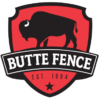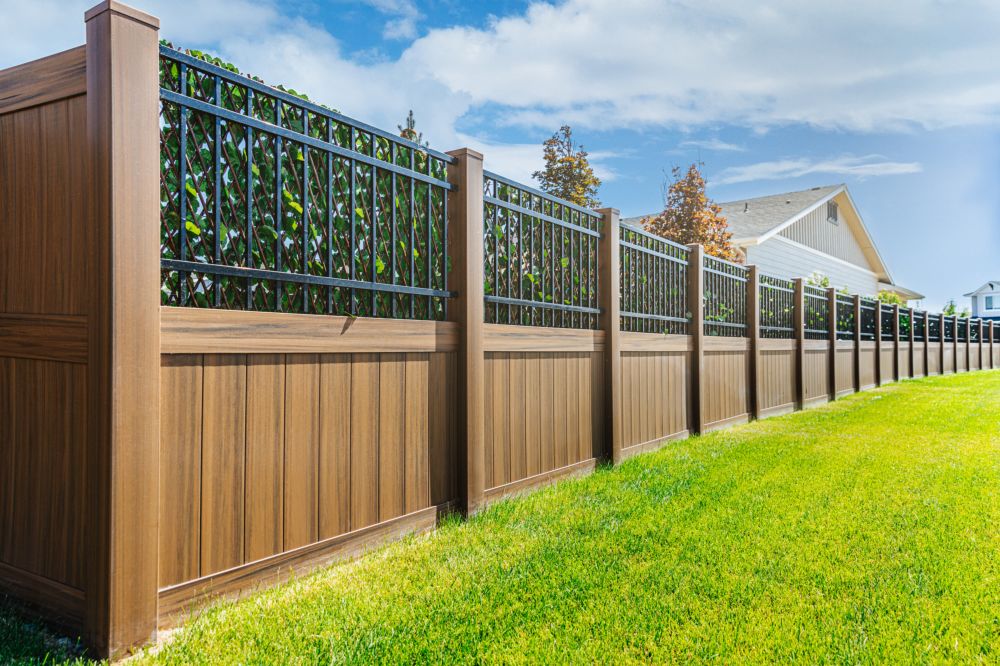Is your home’s property enclosed by a fence yet?
If not, we’ve got some compelling reasons why now is as good a time as any to install one!
When it comes to safety or privacy, it’s hard to put up a more appropriate barrier than a fence between you and the outside elements—including weather and your (beloved but nosy) neighbors. A secured property improves curb appeal, directly affecting home resale value. Fences also aid in noise reduction!
Security and boundary setting aside, various types of fencing contribute greatly to the overall aesthetic and beautification of your space.
With this information in mind, you may be wondering what the best types of fences for your property are. There are several options—we’ll compare them below.
Vinyl Fencing
You’ve probably seen vinyl fencing around your neighborhood before. It’s the often white (but sometimes tan/beige, gray, faux wood, etc.) fencing made from PVC.
Vinyl fencing is an incredibly popular choice for homeowners.
For one, it’s extremely low maintenance. It doesn’t rot, doesn’t take damage from insects (think termites) or weather, is easy to clean and is highly durable. You won’t experience cracks, splinters, or a faded finish.
Vinyl also comes in several different styles, from decorative or semi-private to a ranch rail or fully private fence. You might opt for paneling, tongue-and-groove, or a specialty top, like lattice or picket.
The one caveat to vinyl fencing is its upfront costs. It tends to be more expensive to install initially—but the longevity is there to make it worth it!
Wood Fencing
Wood, like vinyl, is a common and favored fencing option for many. A well-maintained wooden fence can last you over a decade, while managing to look charming and appealing the entire time.
Some of the best types of wood to use for fencing include cedar. Cedar is gorgeous, requires little maintenance, smells great, and is also insect-repellent.
Wooden fences need more maintenance than vinyl—requiring weather-proof treatments that help protect them from the elements. You may need to reapply finishes in the future to improve durability. Often, the wood used for fencing is already pressure-treated, allowing it to better withstand bugs, moisture, and more.
Ornamental Iron Fencing
Depending on your neighborhood or home’s exterior design, wrought iron fencing might fit right in.
This classic design gives off Central Park vibes with its elegant, timeless appearance. It’s also low-maintenance, durable, and sturdy—the perfect triple whammy that homeowners look for when shopping for efficiency. Iron fencing provides the border you need.
It also offers privacy, but less than you would get with other fencing options. Many homeowners supplement iron fencing with foliage like trees, shrubs, or bushes.
Privacy Fencing
Privacy fencing is identified as any type of fencing that’s between four and six feet tall with solid infill. Often, the fence boards are stacked horizontally and have no see-through gaps, offering total protection from outside.
Privacy fencing is ideal for people with children or pets, as it does a fantastic job of keeping them in—and wild animals out. Potential intruders are also no match for these tall fences, designed to keep you safe inside.
Because of the height of privacy fencing, it’s recommended to check with your local zoning department before installing. It’s also a nice gesture to let your neighbor know if you intend to install a privacy fence, as it’s quite the border.
Concrete Stone Fencing
Concrete stone fencing might not be the first consideration on your list, but it’s quite the worthy contender.
This elegant fencing style is sturdy, classic, and magnificent in its boldness. With staggered heights throughout the perimeter, it offers a nice amount of depth to any front or backyard.
While concrete is durable, sturdy, and nearly maintenance-free, you may believe it’s too expensive an investment—but the opposite is true. Thanks to new technology, concrete stone fencing packs the same punch as concrete, with 90% of the weight removed. That means it’s not only lighter, but more affordable too.
With no compromise to integrity, you can also choose between a wide variety of colors and natural-looking stones.
Picket Fencing
Ah, the white picket fence of your childhood dreams!
In practice, picket fencing is just as dainty and delicate as you would imagine, pairing wonderfully with small cottages and community-oriented neighborhoods. You’ve got the border marking your space, keeping kids and pups in—but nothing so tall as to stop you from waving at the couple next door as you unload groceries in your driveway.
Picket fences are traditionally made out of wood, but modern versions can achieve the same look with PVC.
Chain-Link Fencing
Another option is chain-link fencing—the fence you imagine when you think about what borders basketball courts, schools, and other public places.
Because of that, you can expect a less homey feel to a chain-link fence, but it does offer easy maintenance at a low price point.
Privacy is limited but can be increased by interweaving plastic privacy slats.
Agricultural Fencing
Does your home come with a piece of land, a barn, and some farm animals?
Say no more.
Agricultural fencing is ideal for farmers and homeowners alike. Whether you’re actually a rancher or you just adore farmhouse chic, these fences hold livestock while achieving that coveted aesthetic.
The Grass Is Greener With These Types of Fencing Options
Metal fences, wood fences, vinyl fences—oh my!
There’s no lack of choices when it comes to bordering your home’s property.
Which of these types of fencing options is right for you? That depends on factors like budget, style preferences, and what benefits each one offers.
If you’re still unsure about which one is best for you, we can help!
Contact Butte Fence today to ask any questions or get a free quote. We look forward to helping you beautify and secure your space.


